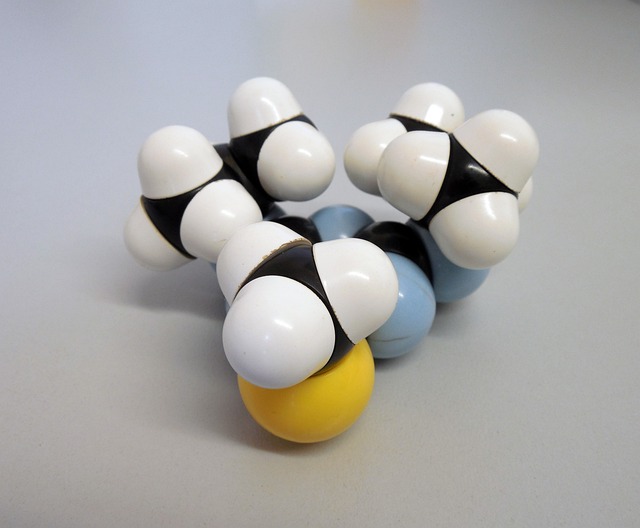Researchers at Johns Hopkins Medicine say they have found a specific sugar molecule that could potentially be a key factor in Alzheimer’s development. This discovery was made after examining the brain tissues of several individuals who died from the disease. According to the researchers, the sugar molecule, called glycan, could be targeted in early diagnostic tests. Since Alzheimer’s is the most common form of dementia in America, finding potential early indicators is vital to developing treatments and preventative measures.
How Glycan Can Potentially Cause Alzheimer’s Disease

Alzheimer’s disease is a progressive disorder resulting from the death of brain nerve cells. This is typically the result of A buildup of damaging proteins called tau and amyloid. It is the role of the microglia, the immune cells of the brain, to clean up these harmful proteins. Previous studies revealed that the disease is more likely to develop when the cleanup process is not functioning optimally. This is caused by an excess of CD33 microglia cell receptors in some individuals.
Special Sugar Connector Molecules

According to the lead author of the study, Ronald Schnaar, “Receptors are not active on their own. Something needs to connect with them to block microglia from cleaning up these toxic proteins in the brain.” The team’s previous studies revealed that the connector molecules for CD33 are special sugars known as glycans. These particular molecules are transported around the cell by specific proteins that aid them in finding their associated receptors. This combination of glycan and protein is known as a glycoprotein.
Read More: Expert Questions Whether Alzheimer’s Is Truly a Brain Disease
Reverse Engineering Brain Tissue

The researchers examined the brain tissue of five Alzheimer’s patients who had passed due to the disease. Their goal was to try discover which particular glycoprotein connects with CD33. The researchers gathered thousands of different glycoproteins from the brain tissue, but only one ended up connecting to CD33. The team first set about separating the glycan from the other potential glycoprotein candidates. They effectively used the CD33 to catch and separate the glycan, because it was the only one that connected to it.
Deconstructing the Glycan

Glycans are composed of unique sugar building components that regulate how molecules interact. These sugars can be identified by their individual parts. The team used various chemical techniques to break down the glycan step by step, determining the identity and sequence of its component blocks. The team identified the glycan part as sialylated keratan sulfate. They then identified the protein component by taking its “fingerprint” with mass spectroscopy, which detects the building blocks of the protein.
Identifying the Protein Portion

The researchers then compared the molecular makeup of that protein with a large database of the structures of other known proteins. By doing so, they concluded that the protein component of the glycoprotein was the receptor tyrosine phosphatase (RPTP) zeta. The team then names the combined structure RPTP zeta S3L. Previous research had revealed that the same glycan signature had been found on a protein that regulates allergic responses in the airway. Furthermore, they found that a disruption of the glycan resulted in a dampening of allergic responses in mouse subjects.
Read More: How a Rare Medical Procedure Led to The Transmission of Alzheimer’s
The Importance of CD33 Identification

According to another of the study’s authors, Anabel Gonzalez-Gil Alvarenga, “We suspect the glycan signature carried on RPTP zeta may have a similar role in deactivating microglia through CD33.” Subsequent investigations revealed that the brain tissue of the five individuals who passed from Alzheimer’s contained more than double the amount of RPTP zeta S3L as that of healthy donors.
A Step Forward

These findings suggest that this glycoprotein may interact with more CD33 receptors than a healthy brain, decreasing the brain’s ability to eliminate toxic proteins. Identifying the particular glycoprotein offers a step toward discovering new therapeutic targets and even early diagnostics for the disease. The researchers will next look into the structure of RPTP zeta S3L. They hope to discover how its associated glycans contribute to the glycoprotein’s unique ability to connect to CD33.
The Bottom Line

This new discovery may offer new hope for earlier Alzheimer’s detection. Targeting this glycan could advance methods for diagnosis and treatment. Because high amounts of RPTP zeta S3L could damage brain immune responses, reducing this glycoprotein could help the brain eliminate harmful proteins. Furthermore, understanding this molecule’s structure could lead to future medical discoveries. However, additional research is required before human therapeutics can be created. Yet, the work still represents a significant advance in Alzheimer’s disease research.
Read More: This Daily Habit May Help Lower Your Risk of Alzheimer’s

